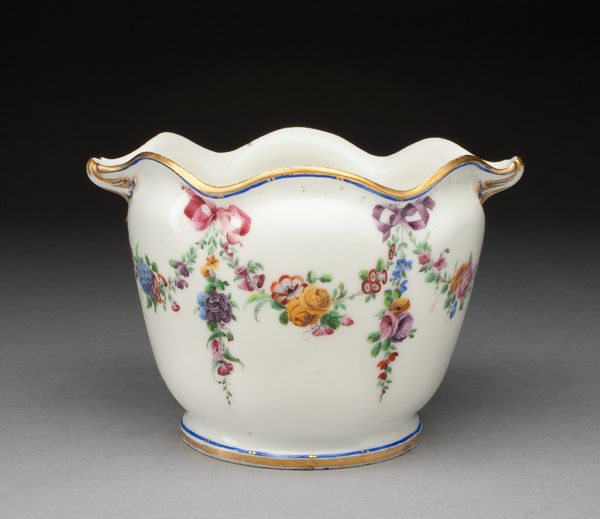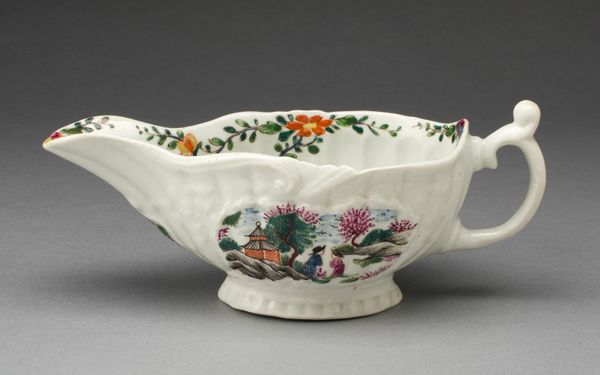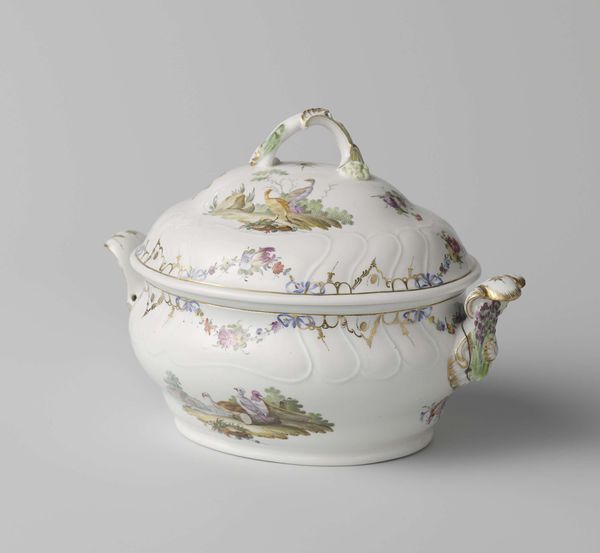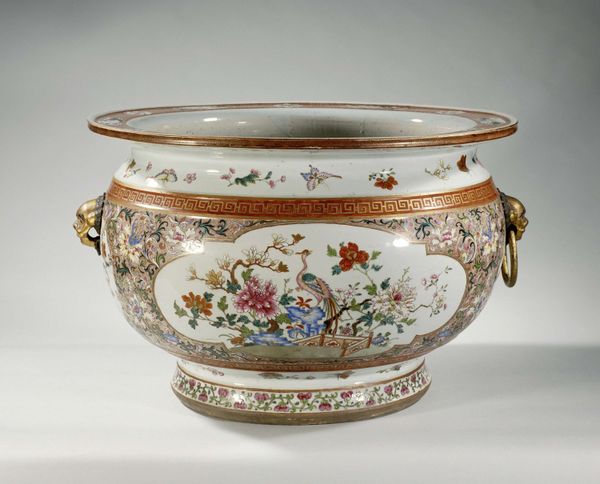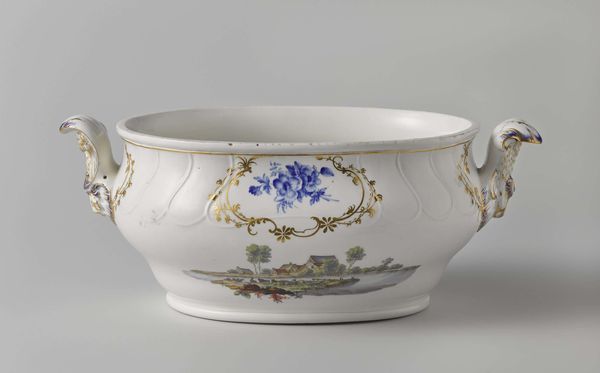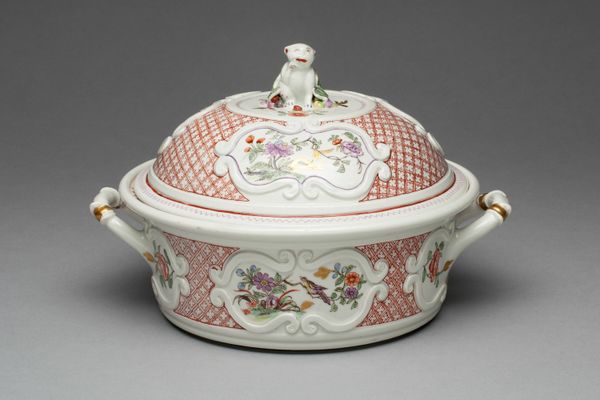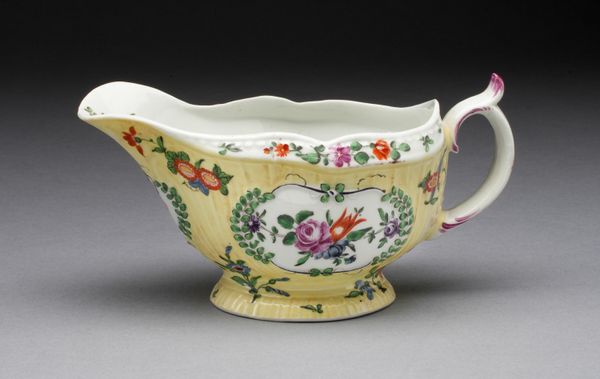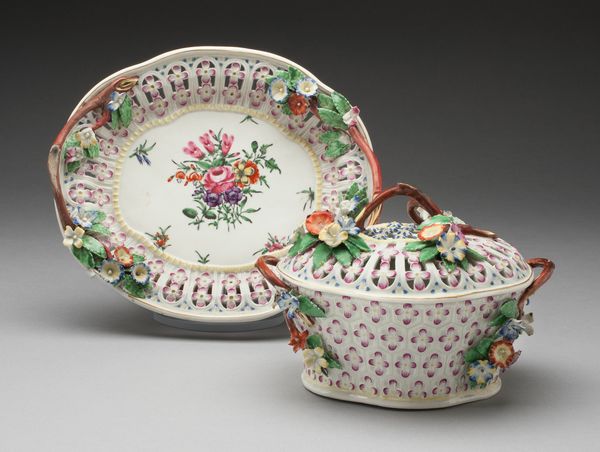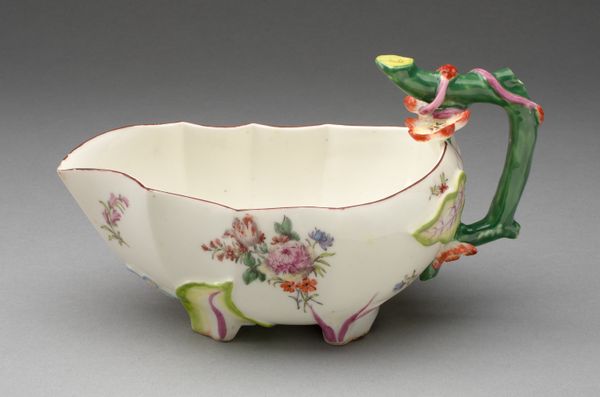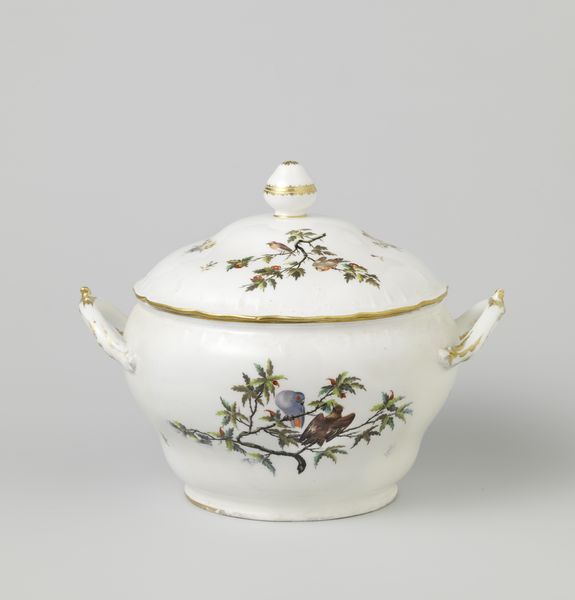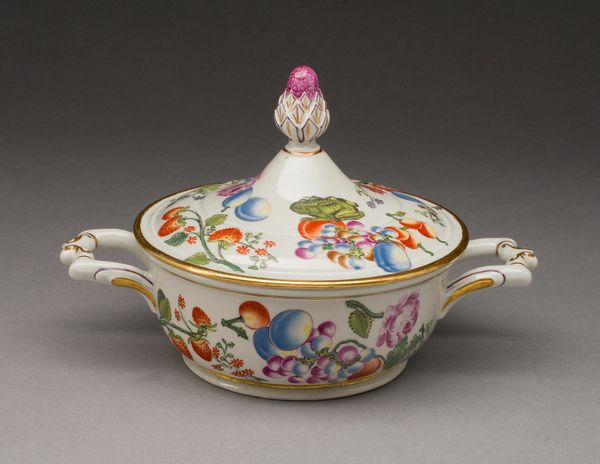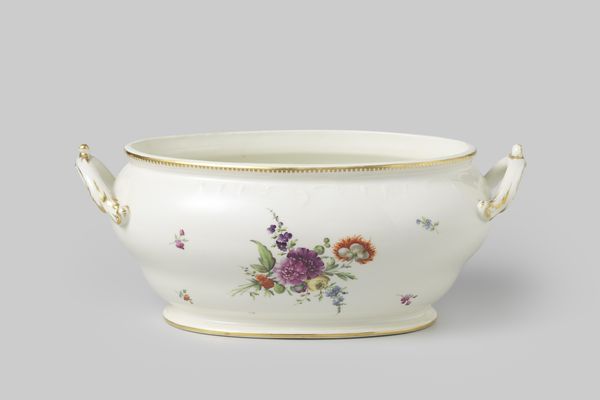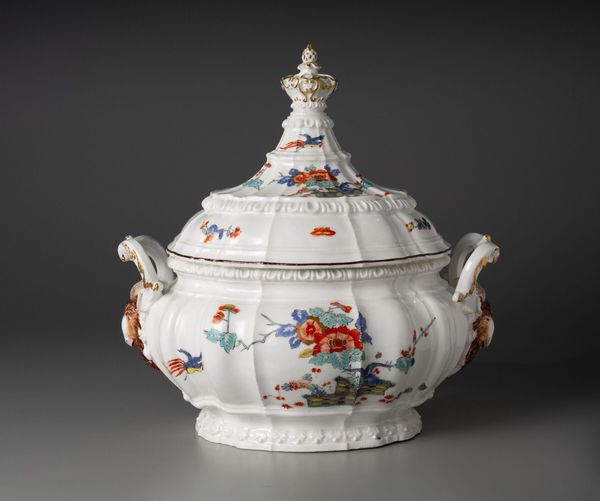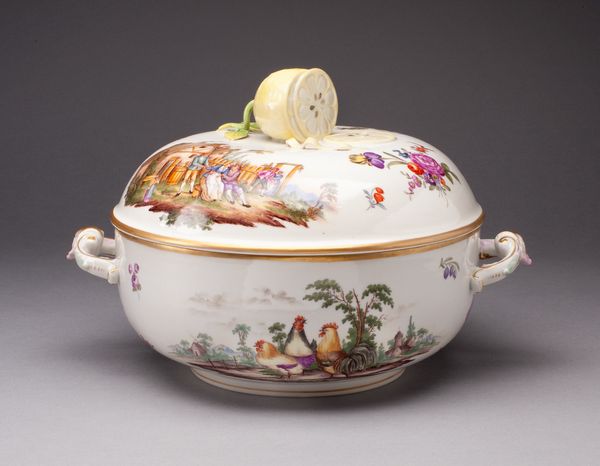
ceramic, porcelain
#
ceramic
#
porcelain
#
ceramic
#
decorative-art
#
rococo
Dimensions: H. 19.1 cm (7 1/2 in.); diam. 38.1 cm (15 in.)
Copyright: Public Domain
Curator: I’m immediately struck by the overwhelming sense of beauty this piece exudes—it’s such a whimsical object. Editor: And beautifully representative of its time. We’re looking at a porcelain Tureen, circa 1725, produced by the Du Paquier Porcelain Manufactory. Think about the social and political implications—the wealthy elite indulging in elaborate dining rituals amidst vast inequalities. Curator: It's all there, isn't it? From a symbol-centered lens, the birds signal freedom and a connection to the heavens. I wonder, did the consumer of the piece read the artwork as one speaking to liberation from the woes of earthly existence? Editor: Or perhaps it was an attempt to visually colonize an idealized nature. Floral motifs and aviary life—hallmarks of Rococo design—speak to humanity’s domination over nature and its resources, specifically the raw materials required for making and adorning the object itself. Curator: A dominating view or not, the composition seems so fluid. Notice the careful symmetry balanced by an energetic dispersal of color and imagery. Every inch teems with some element beckoning exploration. The very materiality of porcelain also speaks volumes: how many hands were involved in creating this vessel from clay and pigment? Editor: The creation of these objects required an elaborate network of laborers to sustain them—everyone from miners extracting the clay to potters molding it and then artists decorating the final shape. These people represent layers of labor erased by the polish and perfection of the final piece. Curator: It brings to mind how an object can often bear multiple layers of signification across centuries. And looking closely, you’ll discover how a small detail shifts or reinforces the larger composition; how what seems so delicate is also undeniably assertive. It’s fascinating! Editor: It’s an object born of privilege, definitely, and one that needs a critical assessment when considering its enduring charm. But there's an enduring tension: even through critique, the object does endure, which I find thought provoking.
Comments
No comments
Be the first to comment and join the conversation on the ultimate creative platform.
